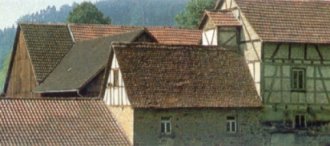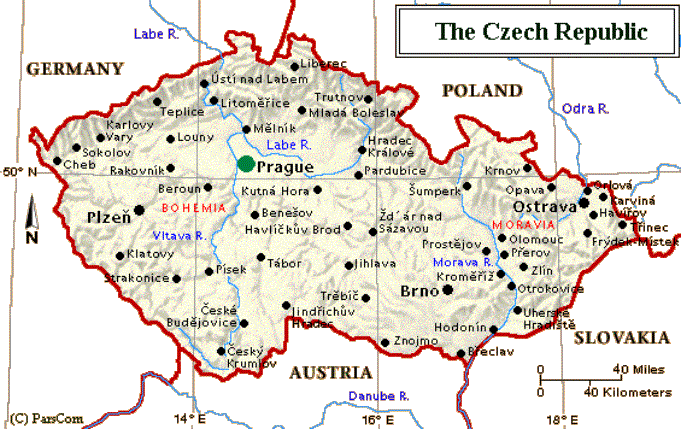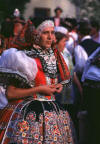 Austria
Austria
 Austria
Austria
The Republic of Austria is located in the heart of Europe. Picturesque, from the mountain peaks to the Danube Valley, Austria is a land of lush and fertile beauty. From the Middle Ages through the present day, the Danube River remains one of the most important waterways in Europe. Austria also boasts of passable alpine routes and wide valleys. Perhaps that is why this country has always been a crossroads for traders, migrants and armies traveling north and south or east and west across Europe.
In the 1800’s when the Fritschers were living in the Austrian Empire, it included a much larger area. What is identified as the Republic of Austria since the end of World War I, is only a small portion of the area once considered to be Austrian Empire. The Austrian Crownlands, or Czech Lands, consisted of Bohemia, Moravia and Silesia. As an independent country, the Czech Republic appeared on European maps after the Treaty of Versailles in 1918 as a part of former Czechoslovakia. Until then the Czech lands of Bohemia, Moravia and Silesia were under Austrian rule. The area where the Fritscher family lived is located in Moravia. Climate varies greatly due to the mountains but winters are generally cold with snow and rain, and summers are cool. In general, temperatures decrease with increasing altitude but are relatively uniform across the country at lower elevations. The mean annual temperature is about 48º F (9º C) at Brno in southern Moravia. The Hercynian and the Alpine-Himalayan mountain systems encircle and divide the land into the Bohemian plateau in the west and the Moravian Corridor (the Moravia River valley) in the east.
Austria's name is derived from an old Germanic term, "Östarrichi," meaning "east realm." The country's origin traces back to the year 996, when a 16-year-old German king, Otto III, deeded some land in the southern part of his kingdom to a bishop who promised to fortify the land against invaders. Rich medieval history has left hundreds of fairytale chateaux and castles scattered across Austria and the Czech Republic. Austria and the Czech Republic have historic ties to both West and East Europeans.
The Homeland - Kaltenlautsch - Studena Loucka
The Fritscher family came from Kaltenlautsch, Moravia, Austria, now called Studena Loucka, in the Czech Republic. Kaltenlautsch is a small village located on the river Morava which is northwest of Olmutz, now called Olomouc, and about 106.7 miles East of Prague. The nearest city is Muglize where the village is about one kilometer away. Olomouc, which once was the capital of Moravia, is five kilometers from Studena Loucka. Kaltenlautsch /Studena Loucka is about fifty miles north (and slightly east) of Brno, once the capital of Moravia. Studena Loucka is in the Okres (precinct) of Sumperk at an altitude of about 1837 feet. The words Studena Loucka translate to "little cold meadow". Kaltenlautsch appears to be a combination of the words for "cold" and "mountain pine". Today the village is surrounded by forests and many apple orchards.
Johann Fritscher and all of his children were born in Kaltenlautsch, Austria. Birth records for all the Fritschers are kept in the village church in Studena Loucka and Olomouc, and the relatives who remained in Austria are buried in the village cemetery.

Brno
Brno lies in the central part of Europe, and is the second largest city in the Czech Republic. At the same time, it represents the center of the province of Moravia, one of the historic lands of the Czech Crown. It is situated at the crossroads of ancient trade routes which have joined the North and South European civilizations for centuries. Brno is situated in a picturesque countryside, surrounded on three sides by wooded hills and opening to the Southern Moravian lowlands to the south of the city. In the north, the city is guarded by the foothills of the Drahany and Bohemian-Moravian ranges. The city itself lies in the basin of the Svratka and Svitava rivers, somewhat to the north of their conflux at elevations ranging from 190 to 425 meters (620 to 1395 ft) above sea level.
Olomouc
Olomouc
( Olmutz or Holomauc), a town of Austria
(Czech Republic) in Moravia, 67 m. N.E. of Brno. It
is situated on the March river, and is the ecclesiastical metropolis of Moravia. Until
1886 Olomouc was one of the strongest fortresses of Austria, but the
fortifications have been removed, and their place is occupied by a town park,
gardens and promenades.

Every four years the people of south Moravia, the part of the Czech Republic that has best kept its folk traditions, gather in the small town of Kyjov for a four-day festival of music, costumes and wine. Click on the picture for a larger view of the traditional dress.
Bibliography:
Library of Congress - Czechoslovakia
http: //lcweb2.loc.gov/frd/cs/cstoc.html
bohemica.com,
mcaonline.ca/prague/geography.html,
press-artis.cz/volne.htm